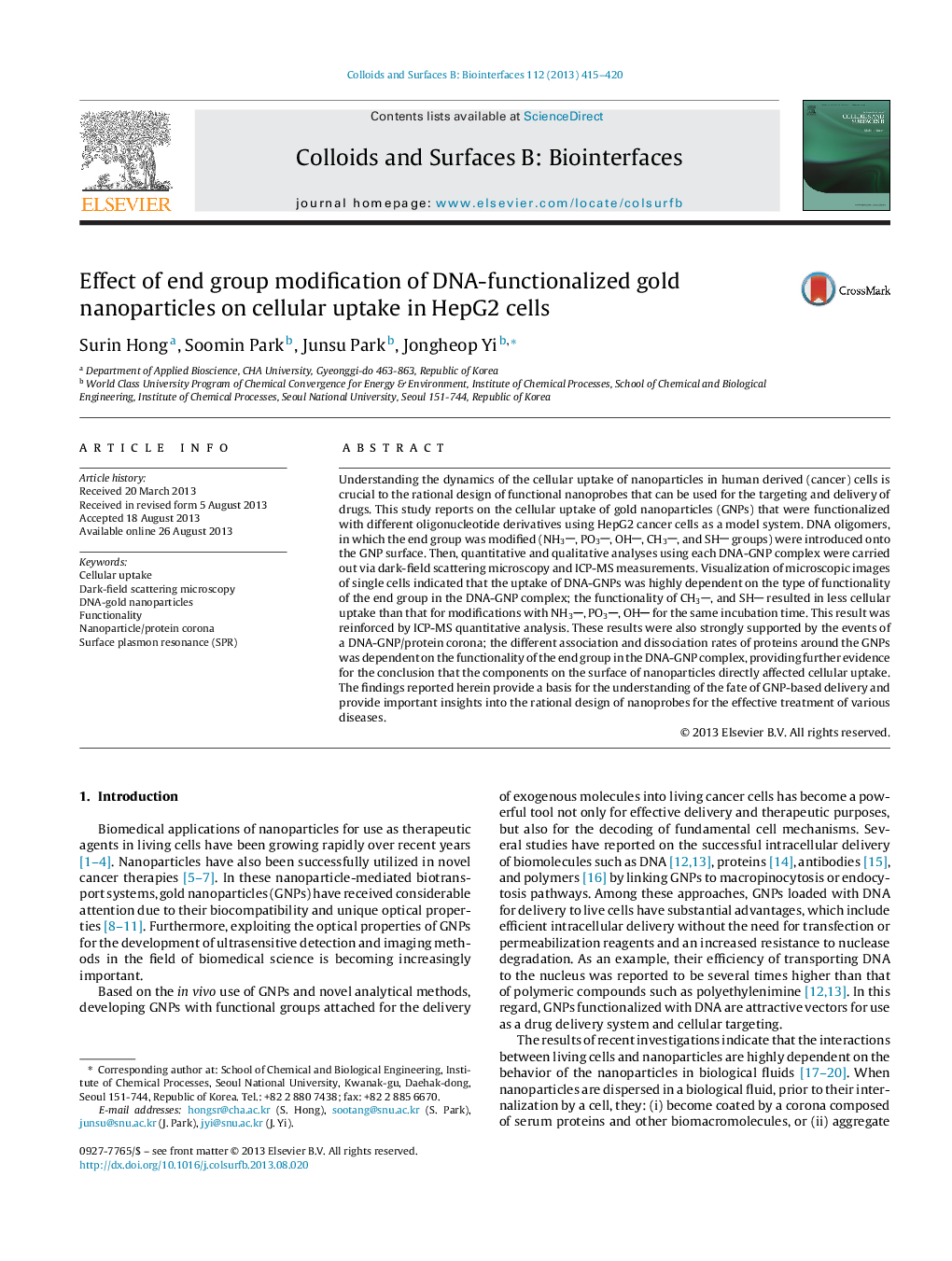| Article ID | Journal | Published Year | Pages | File Type |
|---|---|---|---|---|
| 6983651 | Colloids and Surfaces B: Biointerfaces | 2013 | 6 Pages |
Abstract
Understanding the dynamics of the cellular uptake of nanoparticles in human derived (cancer) cells is crucial to the rational design of functional nanoprobes that can be used for the targeting and delivery of drugs. This study reports on the cellular uptake of gold nanoparticles (GNPs) that were functionalized with different oligonucleotide derivatives using HepG2 cancer cells as a model system. DNA oligomers, in which the end group was modified (NH3, PO3, OH, CH3, and SH groups) were introduced onto the GNP surface. Then, quantitative and qualitative analyses using each DNA-GNP complex were carried out via dark-field scattering microscopy and ICP-MS measurements. Visualization of microscopic images of single cells indicated that the uptake of DNA-GNPs was highly dependent on the type of functionality of the end group in the DNA-GNP complex; the functionality of CH3, and SH resulted in less cellular uptake than that for modifications with NH3, PO3, OH for the same incubation time. This result was reinforced by ICP-MS quantitative analysis. These results were also strongly supported by the events of a DNA-GNP/protein corona; the different association and dissociation rates of proteins around the GNPs was dependent on the functionality of the end group in the DNA-GNP complex, providing further evidence for the conclusion that the components on the surface of nanoparticles directly affected cellular uptake. The findings reported herein provide a basis for the understanding of the fate of GNP-based delivery and provide important insights into the rational design of nanoprobes for the effective treatment of various diseases.
Related Topics
Physical Sciences and Engineering
Chemical Engineering
Colloid and Surface Chemistry
Authors
Surin Hong, Soomin Park, Junsu Park, Jongheop Yi,
